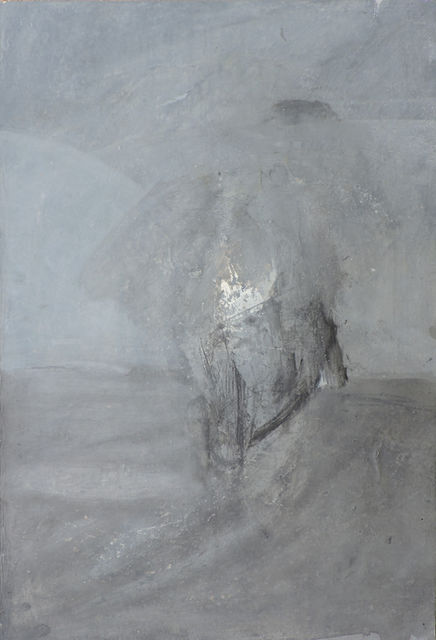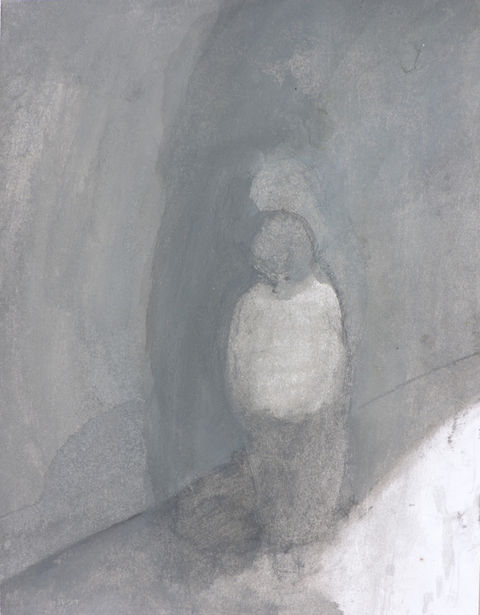
ENRIQUE SAMAMA aka ENRIQUE SAMA
My 2025 project
This text, which I read in a performance reading about my work, is accompanied by a video:
7/9/2025, the day after, on the return.
(following the exhibition Corps et âmes, Paris, Pineault collection, July 2025)
I think about life
I think about death
“I was dreaming,” says the song, but I never dream.
That’s why I painted harder.
And why I live already so intensely now.
“for once I was a boy and a girl, a bush and a bird, and a mute fish of the sea…” and white and black, … everything is possible and beautiful
fragment 117, Empedocles, 5th century BC.
from the exhibition at Mac Val, July 2025. that we had already seen with Kate/Kae Tempest, transgender Irish poet, but we didn’t believe enough, even though there is this possibility in intensity.
Since today, I decided to call myself Sama, which means “little flower” in Palestinian, in this desert. Samama: the closeness of the names shows the closeness of the peoples who have been at war for centuries. I no longer want to be taken for the aggressor and be made to answer for Israel's politics. And I keep universality with the first name, Enrique. Because of course, it is a richness, to be multiple, from several origins. Sama is the only Palestinian DJ, a very young Arab girl, a bit like my daughter. We saw her in Nantes, and we learned that she had been arrested, imprisoned. A little flower that manages to grow in the desert. Now I must choose my artist name, which corresponds to a new birth. (write /sama on the canvas)
And I see at Mac Val in Vitry-sur-Seine, the next day, at the forefront of contemporary art, an Arab artist from Morocco, Najia Mehadji, a central figure in contemporary art, painting huge flowers, immense roses or poppies, and the “we are very little, (...) it’s my friend the rose who told me this morning…” from Ronsard. And I remember the dried poppies you kept in your phone, which just wants to take up more space, so yes, it’s possible to do, to say this, the world is not further away, we are part of it, and we have the right to think this way.
I am also the neutral girl, so beautiful
“What more to do?
after
after
the Lascaux cave
after the Greeks, the Italian Renaissance of Botticelli, of Michelangelo,...
what to do after the self-portraits as women in all the roles assigned to women by Cindy Sherman?
What to do after Marina Abramovic’s performance on the pain of the female body?
Julia KRISTEVA: “everything is possibly art, that is, the multiplicity of possible sublimations...”
It is to search for something more, in the quest to represent the human!
And even what we find inside!
It was by chance, unconsciously
I found these eyes, these faces, and then these bodies
that are mine
that are ours
you will see…
I will read a text that allows entry into my work: written with quotes from experts on my work:
“It’s a new attempt by a new artist to reach the human”! My characters, as Marie HEMERY, psychologist, observed, are “these inner children who reveal themselves, surpass themselves, touch us in the raw expression of deep emotions.
The unconscious would be this impression, this basic structure of identity construction. In fact, it expresses itself in black and white.” — Marie HEMERY
And I add: They are from childhood, from the animal… They stand before death, free and joyful...
Here is the full quote from Marie Hemery:
“My brain keeps thinking about the black and white in Enrique’s works. Like carbon paper or the development of a film. The unconscious would be this mesh-like impression, this basic structure of my identity construction. In fact, it expresses itself in black and white… the coloring only happens in awareness.”
There’s also Jannick CALVEZ, journalist at Art Images magazine, who spoke of my work during the Imprudent exhibition in Brest. She takes up Yves BONNEFOY’s words about Alberto GIACOMETTI’s work. You should know that GIACOMETTI tried to draw his brother’s face every night, but he always felt they were insufficient and destroyed them each morning. We only know the few that his wife saved from destruction. And they are sublime…
Janick CALVEZ says:
“Enrique SAMAMA approaches artistic creation as a liberating and chaotic experience, where he abandons control to let raw and disturbing emotions emerge. To the point of exhaustion. It’s a fascinating exploration of the human psyche, marked by universal desires and anxieties.”
“It’s an intuition that goes straight to the enigma, to make it evident, straight to what ruins and frightens, to make it something shared.”
When I work, for 8 to 10 hours straight, on dozens of sheets, I try to lose control and paint at the edge of consciousness. The next day I look, and if it’s not good, I add stains. And it continues until everything is there.
For me, it’s about searching for love but being trapped, freeing myself through painting. These characters resist, rebel, stick out their tongues, dance… it’s daring everything, even to show these paintings, even to trust! Because we have things in common (gender issues, religion, race, society...), I think these paintings can help. We are different but the same on the essential things of life. For you too...
I hope you’ll look and see something new. Like with the German artist I met at a contest near Milan. I told her at first that I couldn’t speak German and Maryse told me to speak English. I decided to read my text in English because she didn’t have her glasses and couldn’t read. I read her a sentence and asked: “you understand?”
because I felt I spoke English too badly, and she answered “I understands!” And I kept reading like that, through the text. She, a woman who dances with a parasol, who makes photos she prints on plexiglass. And at the end of the reading, she said with a big smile: “we are differents but we are the sames” — that is, we are different but we are the same!
I also wanted to talk to you about intensity and tell you about Antonin Artaud, artist, writer, poet and draftsman, who also wrote Van Gogh, the man suicided by society.
I had written directly on the wall where I paint, in my studio: the confrontation, where is it? And underneath I had written ARTAUD first and it led me to the idea I wrote: attack the paper! And later, I added: to reach gentleness. I had also written Bacon, Velickovic, Arnulf Rainer, but I erased them.
And it’s this gentleness that you noticed, you who look, you followers who follow me, and you who work for child protection…
Artaud remained written because it is an impassable limit: he is an artist and madman in an asylum when he performs exorcisms, mixing the devil and his Christ-like body. But it’s intensity, he crosses the limit where he exits into madness.
And I take his crazy intensity to attack the paper, go as far as I can with painting. Brutally and gently. Attack the paper to reach gentleness.
I timidly call out, …but if you want, you can come closer and see who it is and who you are. The encounter may not happen for those who look too quickly for something. The character on the paper invites the other to stop, to look, to question, to share, and to let something positive emerge about oneself, about one's actions, about one’s interactions with the Other… and to realize where one stands.
To end, I will read you one of my texts: Entre (in the sense of “entering”, and in the sense of “between” two or more things)
between
between humans
between animals
between childhoods
between Gaza and Israel, between Ukraine and Russia, between Iran and Iraq, between China and India…
from all sides, every day
from all sides, every day
between you and me
between the monstrous and beauty
between too clear dichotomies
between gentleness and violence
between survival instincts
enter from all sides
between the too strange
between the conscious and the unconscious
between
between my friends of all genders
between
between our animal part
and nature
these fears come from far, from the fear of death, of degeneration
to go beyond my limits
to no longer do nothing
between my exhibition on the lands of Montaigne about the Human (“Each man bears the entire form of the human condition.”) in 2008…
and the one we saw in August 2024 at the CAPC Museum of Contemporary Art in Bordeaux with Hélène Cixous who takes this up, with also her notion of ghosts.
It’s survival instinct, I have nothing to lose, I’m capable of anything, everything to gain in the exchanges with others. One follower saw in one of the characters something that looks like a shared birth.
Julia Kristeva: “everything is possibly art, that is, the multiplicity of possible sublimations…”
End of performance.
























